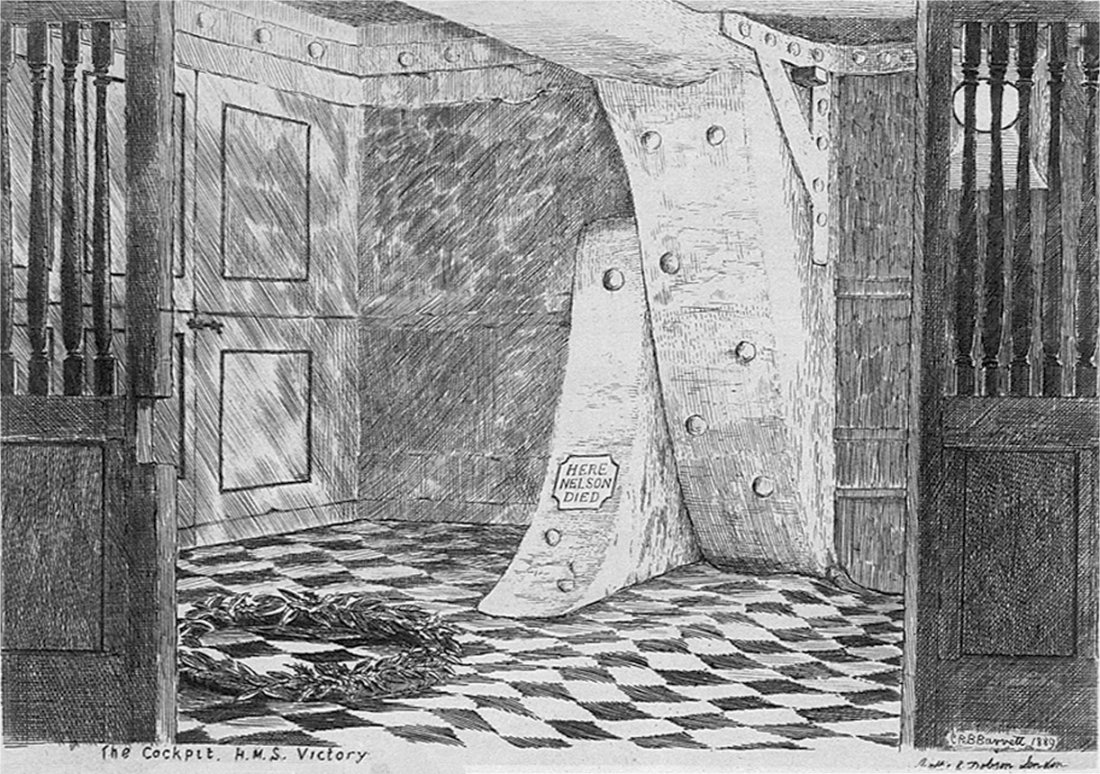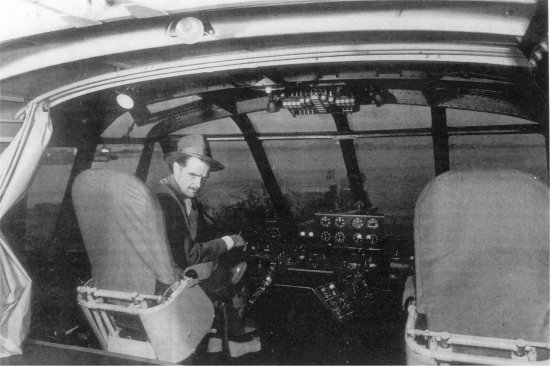Cockpit - origins and use of the term
|
The cockpit of HMS Victory, where Admiral Lord Nelson died during the Battle of Trafalgar. R. Dobson; after C. R. B. Barrett, 1889, National Maritime Museum (Greenwich) |
Originally, a pit, arena or enclosure in which cockfighting was organized, the cocks being the male of the common domestic fowl. See Note for a tenuous explanation.
Maritime:
Cok, cockboat - small boat, 15th century, from ME 'cogbote', Mdu 'kogge'. cf 'cog' single masted cargo vessel derived from Nordic knarr, 10th century. cf also 'coque', French 'hull' from Latin 'concha', a shell.
Cokswayne, cockswain, coxswain (obsolete: coxon, coxen) - 15th century, from cok, cockboat and ME swain, a boy or servant; by derivation, a sailor in charge of a boat (and crew) and who usually steers.
Hence, by the early 18th century, with the introduction of wheel steering at deck level activating the tiller in an enclosed lower deck, the tiller area, often the after end of the orlop (lowest) deck, became the "cockpit" – the accomodation of the cockswain. This area was often used for berthing midshipmen, but was always cleared for battle allowing the surgeon to treat the wounded. See: The Sailor's Word-Book : an alphabetical digest of nautical terms including some more especially military and scientific, but useful to seamen; as well as archaisms of early voyagers, etc, Admiral W.H. Smyth, London, etc, 1867.
By the end of the 19th century, with the advent of yachting, the term was used for a (normally recessed, occasionally enclosed either partially or fully) deck area that included the tiller or wheel, allowing for the coxswain ("helmsman") to steer with some degree of protection from the elements. See e.g. A year in a yawl : a true tale of the adventures of four boys in a thirty-foot yawl, by R. Doubleday, New York 1901, p. 26: "It was a quiet group of boys that stood in the cockpit of the 'Gazelle' and watched the shores of their native town fade from view."
|
The cockpit of a 'string-bag' (Fairey Swordfish). Note the 3 panel windshield. |
Aeronautics:
Quite early in the 20th century, when aeroplanes were in very early development, the pilot would sometimes be seen lying flat, sometimes in a seat exposed to the elements. This was soon replaced by a certain amount of protection, most often with only the pilot's head and possibly his shoulders visible outside the fuselage. This accommodation was named the cockpit. Glass was heavy and potentially dangerous, so winsdscreens were not common. The development of plexiglass in the early 1930s started a move to reliable screens and the development of fully enclosed cockpits.
A very early reference, perhaps the first written explanation, can be found in Vehicles of the air : a popular exposition of modern aeronautics with working drawings by Victor Lougheed (Chicago, 1909): "Lately, however, some of the more advanced craft are appearing with very comfortable arrangements for seating the operator, as is particularly evidenced in the boat-like [emphasis added] cockpits provided in the Bleriot, Antoinette and R.E.P. machines..."
It should be noted that the term cockpit is often replaced by "flight deck"; this most probably found its origins in very early flying-boats, and is possibly now (21st century) the prevalent term for the compartment used by pilot and co-pilot (and engineer, navigator and others as required.)
|
Howard Hughes in the cockpit of his H-4 flying boat, the largest ever built and flown - 218' 6" in length, with a wingspan of 320' 6". |
Automobile:
The driver's space in racing motor cars is aften referred to as the cockpit.
Note: ^ In the early seventeenth century, a London theatre was built on the site of an older cock-fighting site or pit, and named The Cockpit Theatre. It was torn down in 1635 to build cabinet offices for King Charles I. Apparently, local people continued to call the new buildings “the cockpit” after the theater. There exists a rather tenuous theory that "royal cabinet offices" somehow equates to "control centre", hence an airplane's cockpit. [Barnhart Concise Dictionary of Etymology, Robert K. Barnhart, HarperCollins, 1995]



